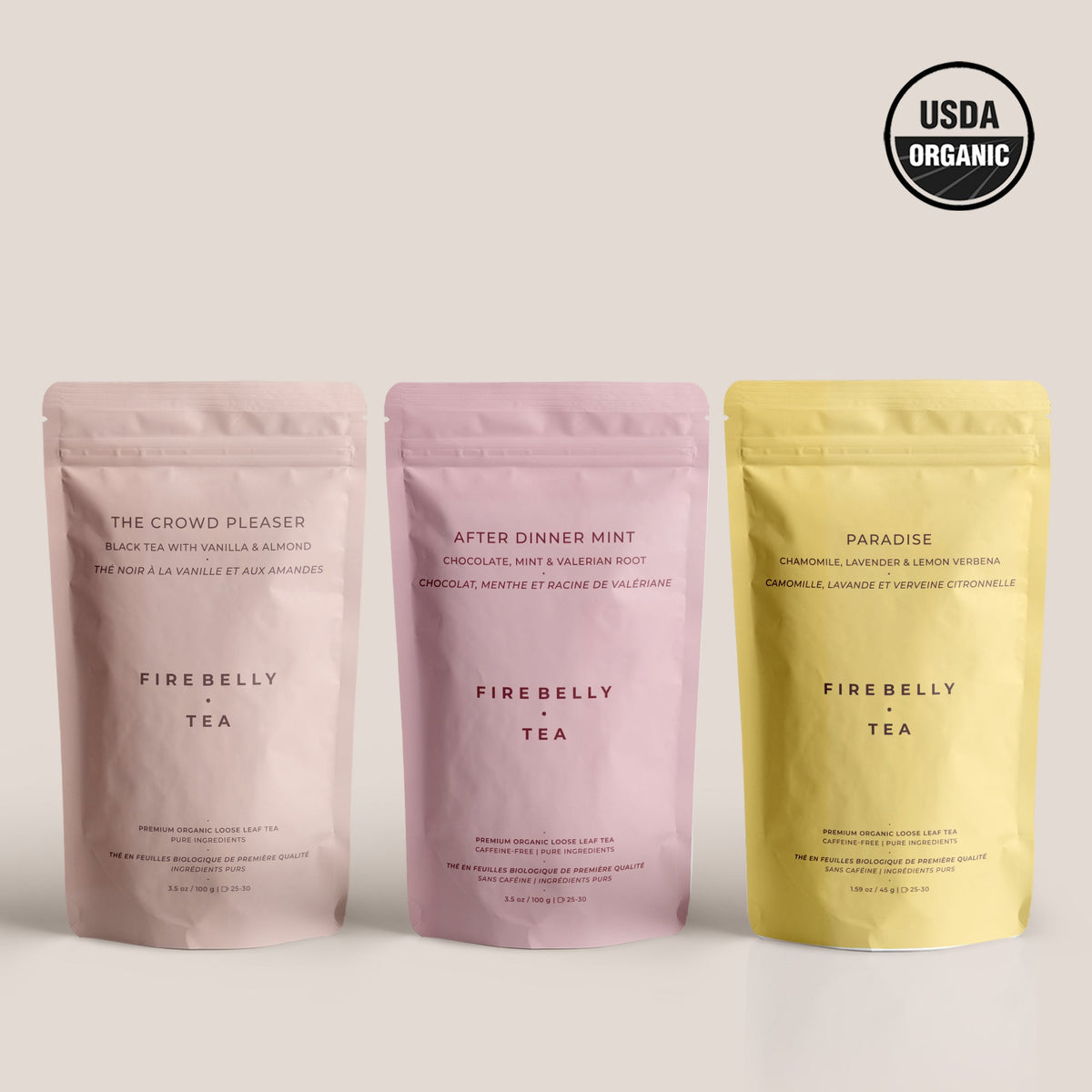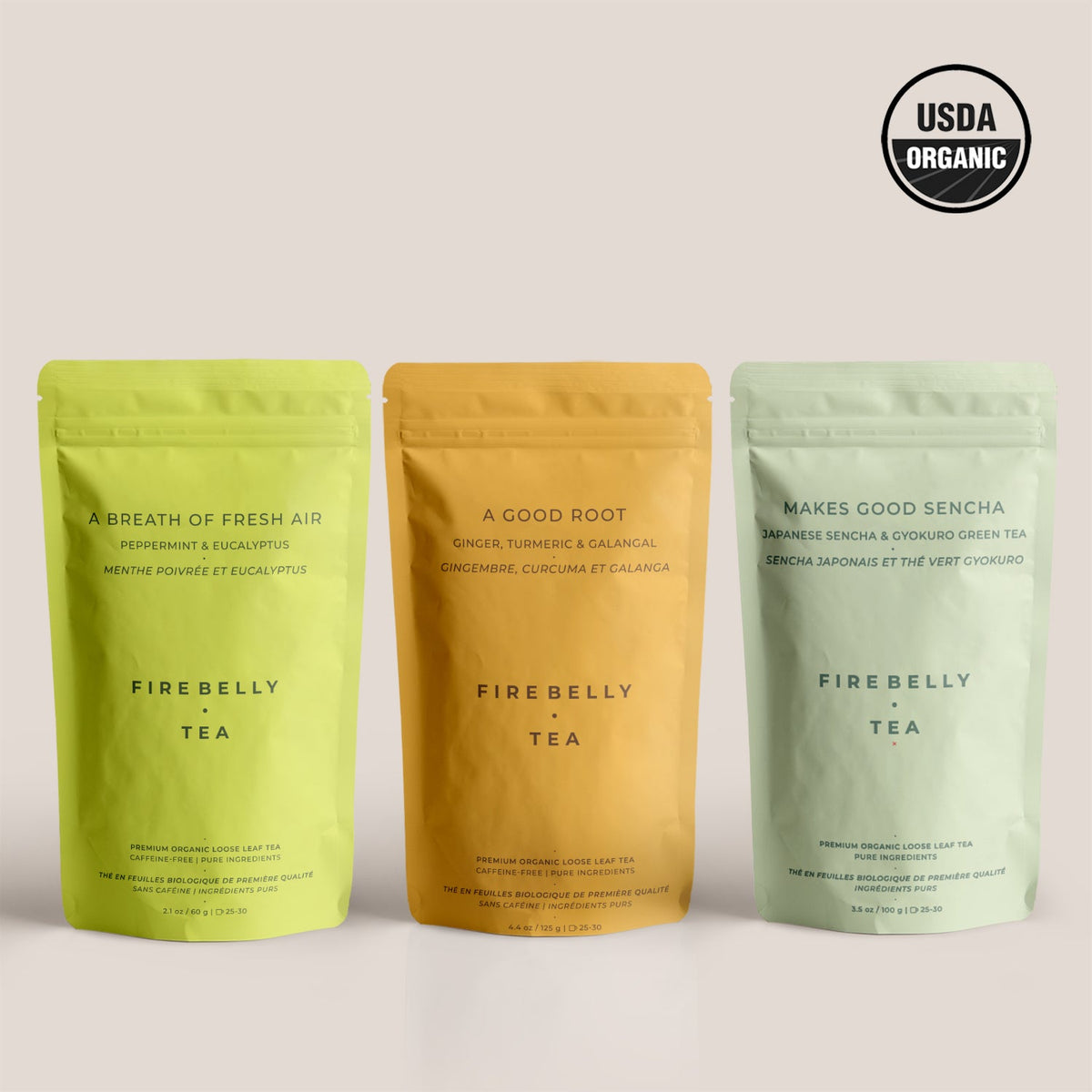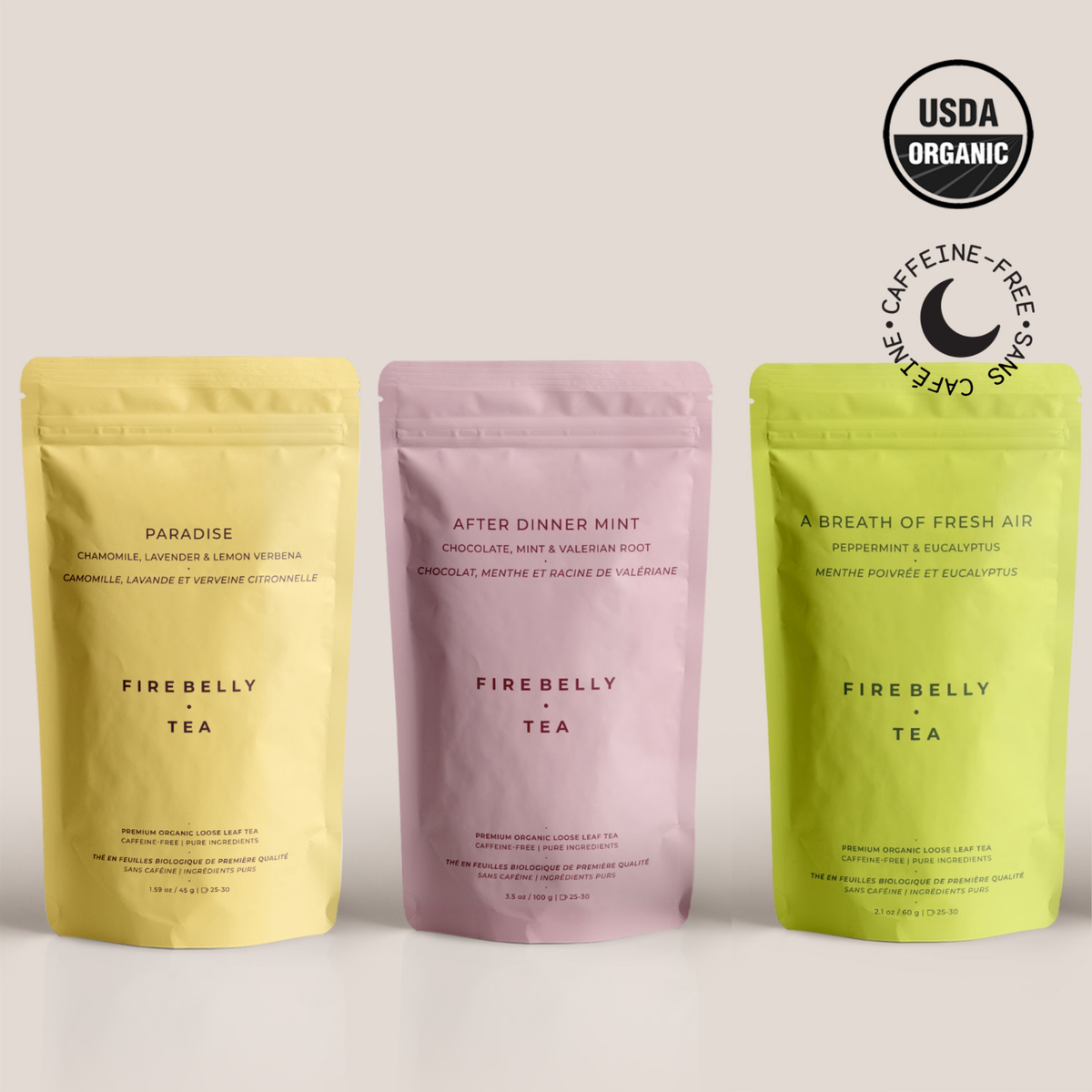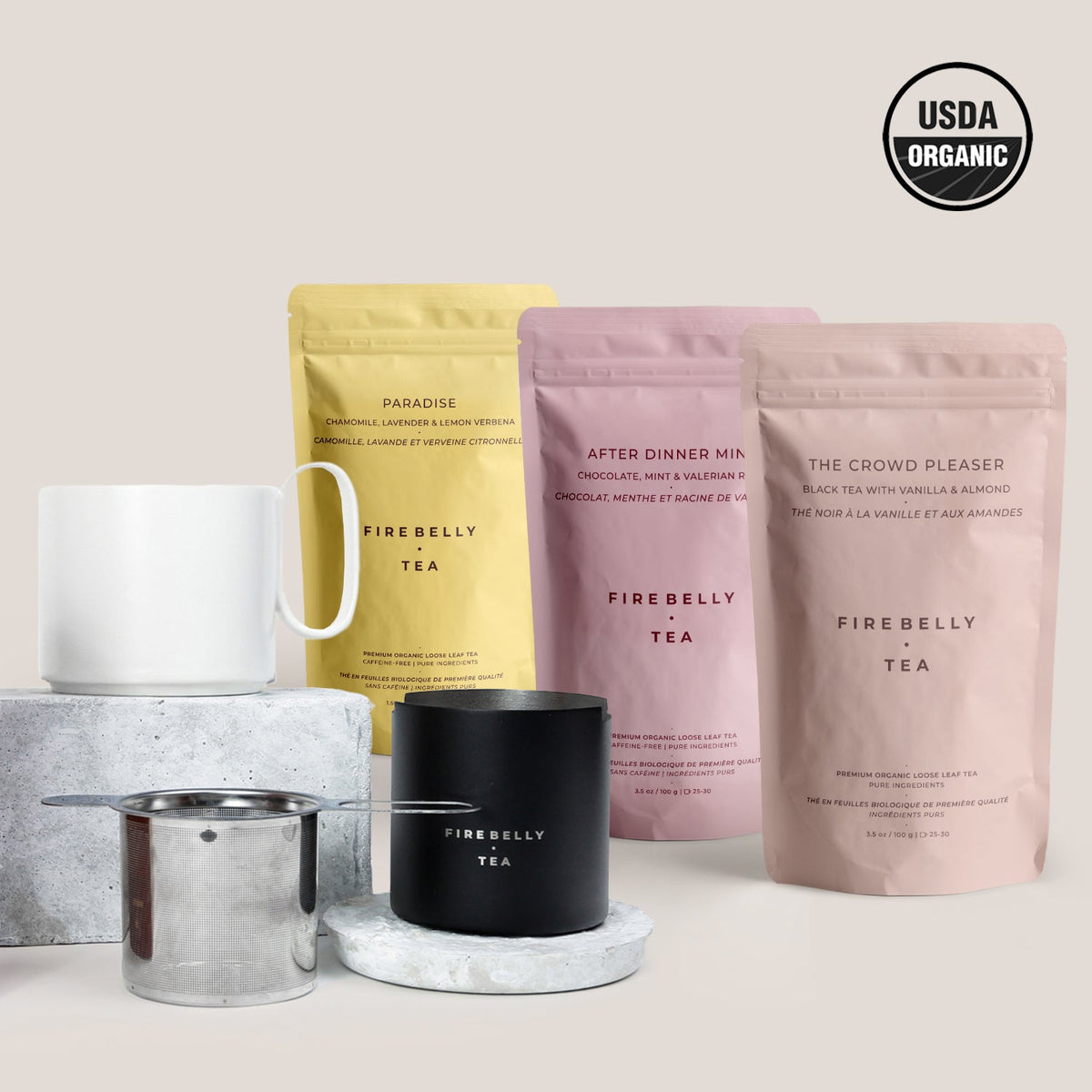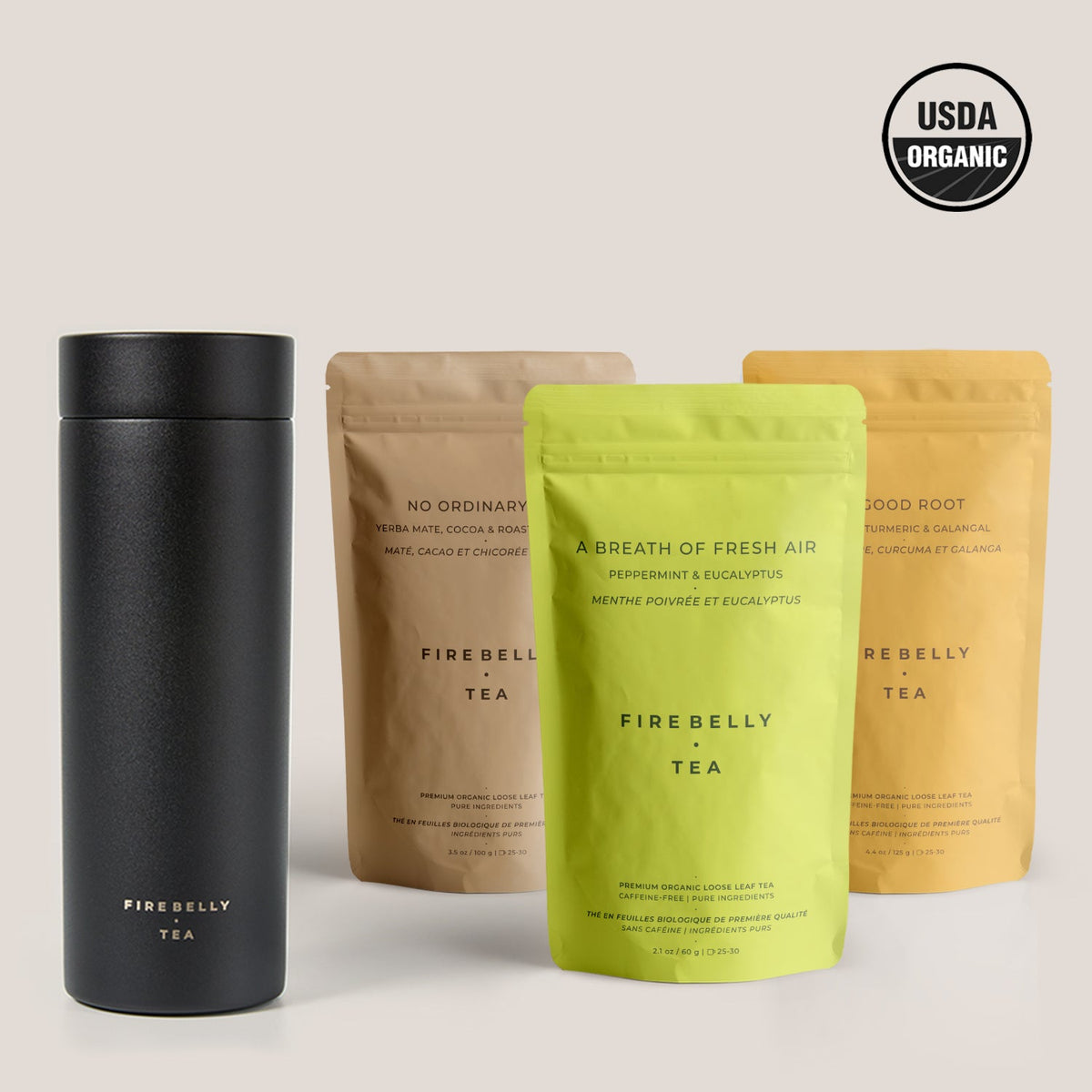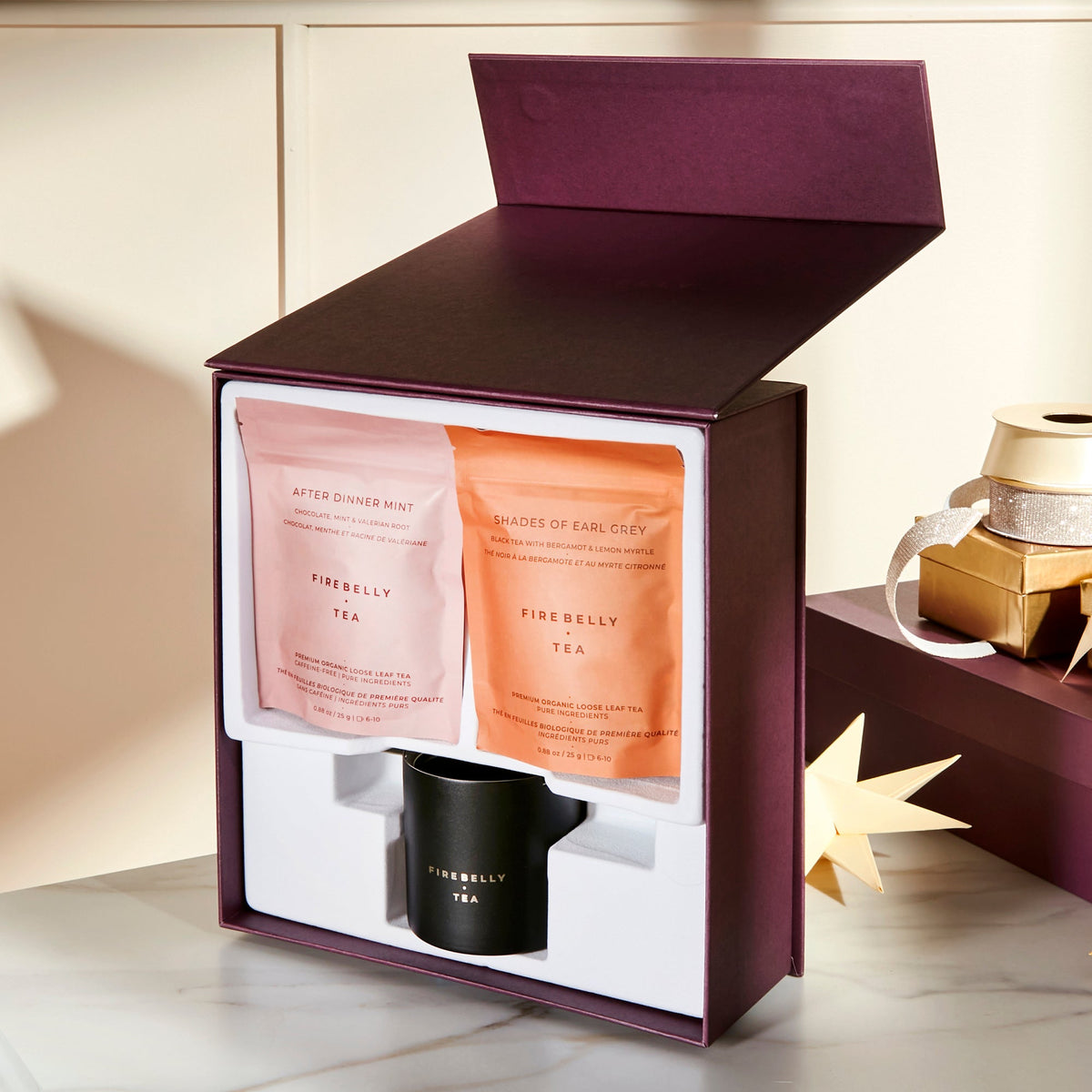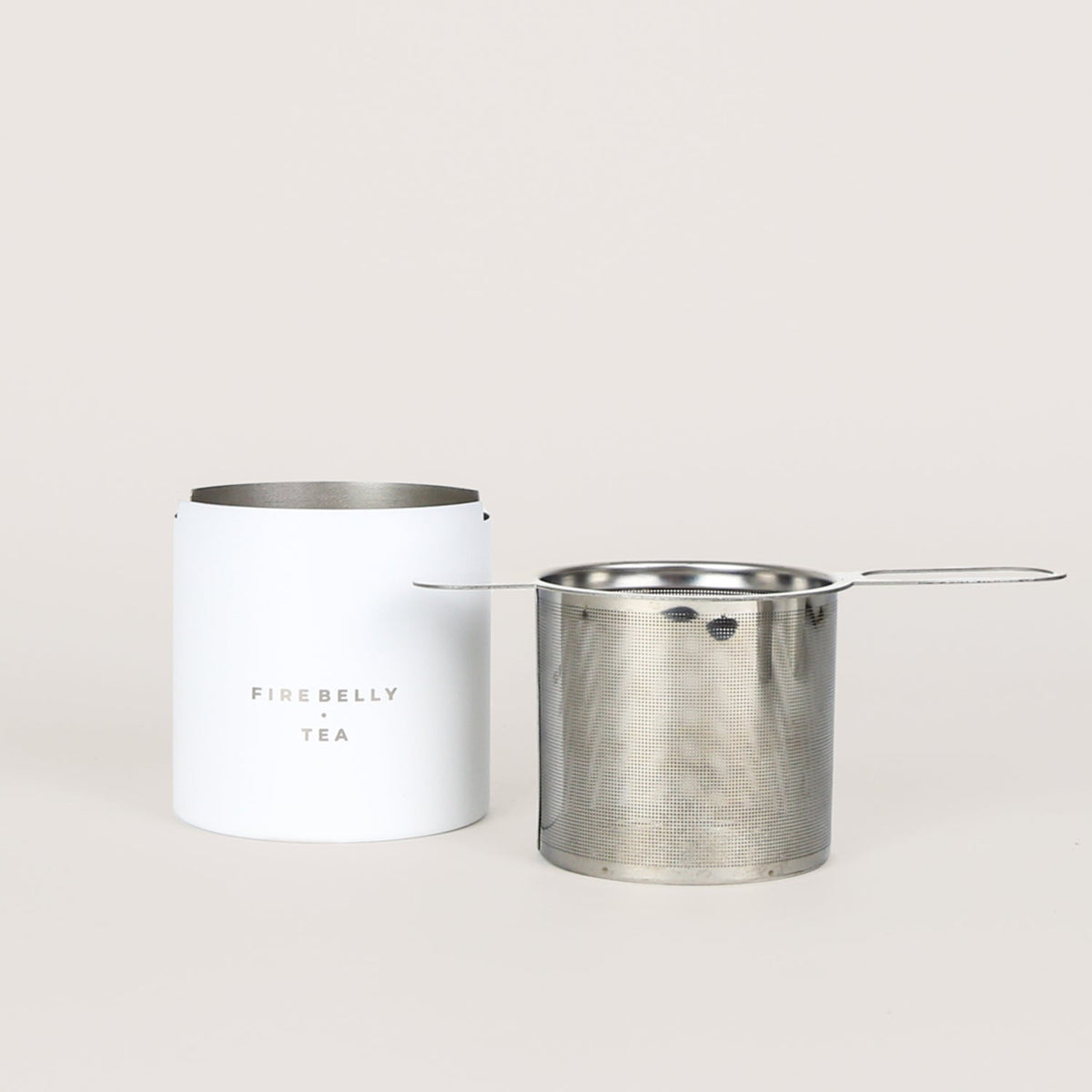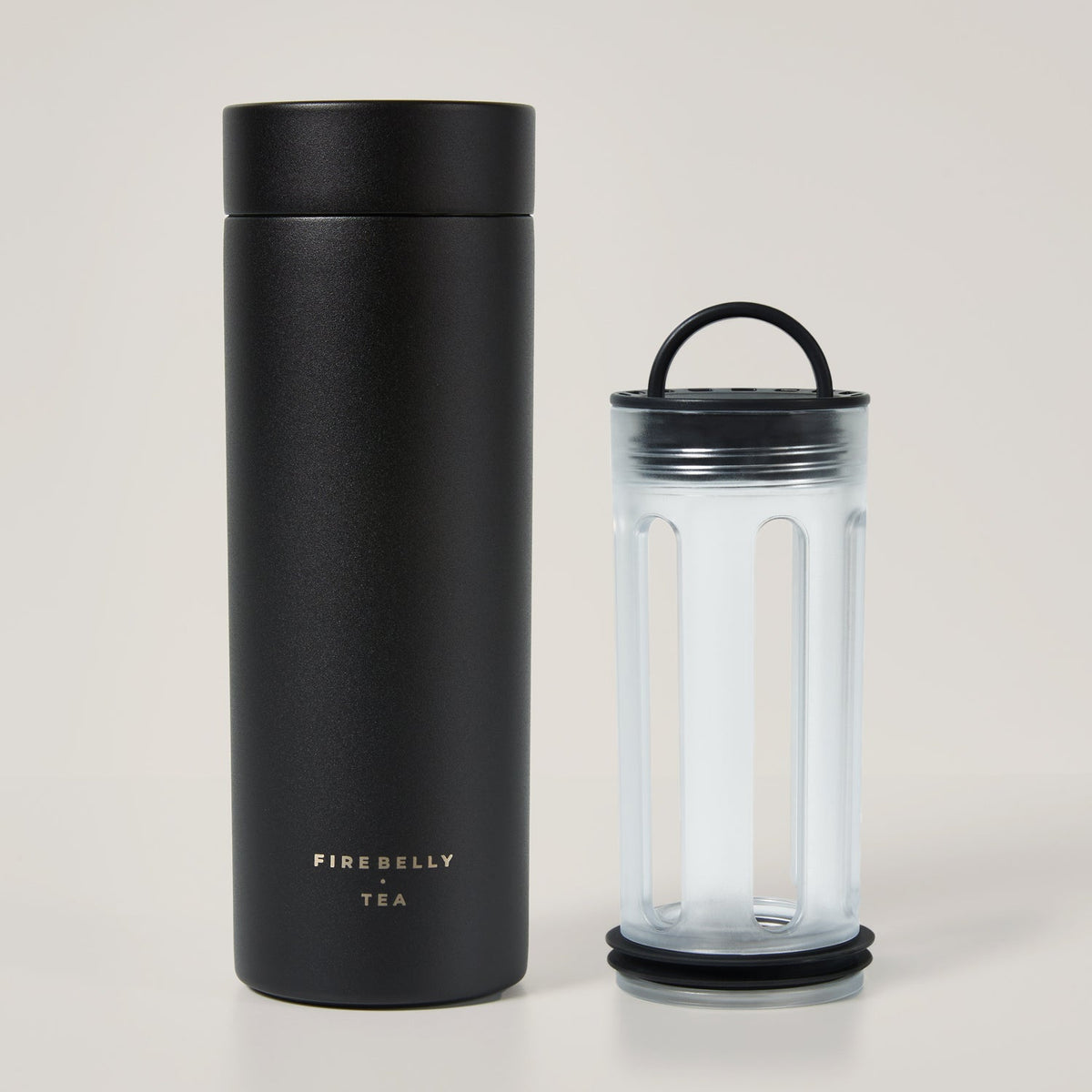Ordering any matcha-flavored beverage today is a quick and simple process. You pull up to the drive-thru and drive away in a few seconds with a delicious and satisfying drink. However, the matcha in your latte, smoothie, or hot tea is not simple at all. It has a complex taste with an even more complex history.
Matcha, a finely powdered green tea with roots deeply embedded in Japanese culture, has gained global popularity - not just as an ingredient in matcha lattes or smoothies but also for its unique taste and numerous health benefits. But what does matcha taste like? This article will open up your tastebuds to the intricate world of matcha, exploring its complex flavor profile, different types of matcha green tea, preparation methods, and more.
A Brief History of Matcha Green Tea
Matcha tea is one of the most celebrated teas in Japanese green tea culture and has roots that date back to ancient China. The tale of this tasty beverage begins during the Tang Dynasty (618-907 CE) when tea lovers first steemed green tea leaves from the Camellia sinensis plant. The Camellia sinensis plant also gives us oolong, white, and black tea.
After the tea leaves were dried, they were ground into a fine powder, giving birth to what we now know as matcha. However, it was in Japan that the art of matcha tea truly flourished and evolved into a unique cultural and culinary phenomenon.
The Birth of Japanese Green Tea and The Tea Ceremony
According to legend, the Japanese Zen Buddhist monk Eisai brought matcha seeds to Japan in the late 12th century. He planted these seeds on the grounds of Kyoto's Rinzai Zen Monastery, where the first Japanese tea plants thrived under carefully cultivated conditions. Tea cultivation spread across Japan, with matcha becoming the star attraction of the Japanese tea ceremony and Zen philosophy.
Meticulous cultivation and preparation methods craft matcha's distinctive qualities and umami flavor. Tea plants are grown in the shade for about 20 to 30 days before the green tea leaves are harvested. This process enhances the chlorophyll production in the tea leaves, creating a vibrant green color and a unique flavor profile. Growing leaves in the shade also increase the amino acid content, particularly L-theanine, contributing to matcha's characteristic umami taste and added health benefits.
Drinking Matcha Today
Today, matcha has made its way into big chain cafes serving matcha lattes and smoothies, health food stores carrying entire lines of matcha-infused health products, and innovative kitchens creating mouth-watering beverages, meals, and desserts.
This powdered green tea has become a household name worldwide, from a matcha latte to a jar of matcha skin cream. Matcha is celebrated today not only for its rich cultural heritage but also for its ability to seamlessly and creatively blend tradition with contemporary tastes.
From Ceremonial to Culinary: Exploring The Different Kinds of Matcha Tastes
If you've been drinking matcha regularly, you'll notice that not all matcha tastes the same, and different matcha grades are available for various purposes. Let's break down the different types of matcha tastes.
Ceremonial Grade Matcha Powder
Ceremonial matcha is revered for its bright green color, smooth texture, and delicate flavor profile. It is considered the pinnacle of matcha quality for Japanese green teas. Ceremonial-grade matcha is often used in traditional Japanese tea ceremonies, where guests enjoy the rich flavor without any added ingredients.
The leaves used for ceremonial grade matcha are carefully shade-grown, enhancing their chlorophyll content and creating a rich umami taste. If you want the ultimate relaxing experience, preparing ceremonial matcha is a meditative and mindful process, focusing on the tea's purity and the ritual centered around the ceremony.
Ceremonial Grade Matcha offers a refined and delicate flavor. A harmonious balance of sweetness, bitterness, and umami characterizes its taste. The shade-grown leaves, carefully handpicked and stone-ground to perfection, contribute to its vibrant color and creamy, velvety texture.
Culinary Grade Matcha Powder
On the other end of the spectrum is culinary-grade matcha. Although it doesn't contain the same umami flavor and bright green color, it is a versatile option with a distinct taste that can withstand high cooking and baking temperatures.
Culinary matcha adds a bold green tea essence to a variety of dishes. From matcha-infused desserts to savory dishes, culinary-grade matcha provides a versatile way for individuals to incorporate the unique flavor of matcha into their gourmet adventures.
Culinary matcha green tea may contain a slight astringency with bitter notes, making it an ideal choice for blending into recipes ranging from baked goods to savory dishes. Despite the intense flavor, this version is a versatile ingredient, offering a robust green tea flavor you can use in a wide range of dishes.
Other Styles of Matcha
Beyond the ceremonial and culinary grades, there are other versions worth noting. Koicha, or thick tea, is a concentrated form of matcha also used in traditional Japanese tea ceremonies. The tea's dense texture and intense flavor make it a good choice for the ceremonial experience.
Usucha, or thin tea, is a lighter version of matcha with a frothier and smoother consistency. It is a popular choice for those seeking a refreshing cup of matcha they can enjoy every day.
Koicha and Usucha also offer unique tasting notes. Koicha has a profound flavor with a stronger emphasis on bitterness and umami, while Usucha has a lighter, more refreshing taste, often accentuating the sweetness and vegetal notes of the beverage.
Matcha vs. Regular Green Tea: A Tale of Contrasting Tastes
While matcha and regular green tea come from the same plant, they have distinctly different tastes. Let's break down the taste differences between these two green powerhouses.
-
Flavor Intensity: One of the most noticeable differences lies in flavor intensity. A good matcha provides a concentrated and robust taste experience. Its flavor is a well-balanced blend of sweetness, bitterness, and umami, creating a full-bodied and layered profile. In contrast, regular green tea, brewed from loose leaves or tea bags, offers a milder taste. The flavors are more delicate, with a subtle combination of earthy or grassy notes, vegetal, and sometimes astringent notes, depending on the specific type of green tea.
-
Texture and Consistency: When whisked properly, matcha creates a frothy appearance and a creamy and velvety texture that coats the palate. This unique consistency sets it apart from regular green tea, which is more watery. The finely ground matcha particles in water contribute to its luxurious mouthfeel, elevating the overall taste experience.
-
Bitterness and Umami: Matcha, especially ceremonial grade, is carefully shaded before harvest, enhancing its chlorophyll content and resulting in a tea with a balanced bitterness that is neither overpowering nor lingering. The umami, or savory taste, is a hallmark of matcha, adding a distinctive layer of richness to its flavor. While it can also contain bitterness, green tea tends to be milder, and the umami notes may not be as pronounced.
-
Preparation Method: How each tea is prepared plays a big part in the tea's final taste. Matcha involves the whisking of powdered tea directly into water. Meaning you're consuming the entire tea leaf and the intense flavor that goes with it. On the contrary, green tea involves steeping leaves in hot water, with the water extracting the oils and flavors in a more diluted form.
While matcha and green tea come from the same tea plant and have similar historical timelines, their taste experiences are vastly different. Matcha has a concentrated, creamy, and nuanced profile, while regular green tea is gentler and subtler. Although each offers a unique journey into the world of green tea, the choice between the two boils down to personal preference.
Mastering the Art of Matcha: A Step-by-Step Guide To Help You Prepare Matcha
Preparing matcha is both a ritual and an art form. The right mindset is needed to help unlock the tea's full flavor potential. Do some yoga, take a few deep breaths, and fully relax using this traditional method and technique.
-
Gather Your Tools: Before preparing matcha, gather the essential tools. You'll need a bamboo whisk (chasen), a bamboo scoop (chashaku), a matcha bowl (chawan), and, of course, high-quality matcha powder. If you don't have these tools, you can always substitute them with what you have. Here are some great matcha accessories you can use!
-
Measure the Matcha: Using the bamboo scoop or spoon, measure the appropriate amount of matcha powder. You would typically use 1 to 2 scoops or about 1 to 2 grams of matcha for a standard cup. Adjust the quantity based on your preference and the type of matcha you are using.
-
Sift the Matcha: Sift the matcha powder into the bowl to ensure a lump-free and smooth beverage. This is a crucial step since it helps break up any powder lumps to the fine consistency needed when you prepare matcha.
-
Add Hot Water: Heat fresh spring or filtered water to around 175°F (80°C). Pour roughly 2 ounces or 60 milliliters of hot water into the bowl with the sifted matcha. Avoid using boiling water directly onto the powder, as it will make your matcha taste bitter.
-
Whisking Process: Whisk the matcha and hot water into a smooth paste using your bamboo whisk. A quick "W" or "M" shaped motion creates a frothy layer. This step is meant to distribute the matcha evenly and contribute to the tea's creamy texture.
-
Complete the Pour: Once you've achieved an even-looking matcha paste, pour the remaining hot water into the bowl. Continue whisking until a consistent froth covers the surface. The result should be a velvety texture with a vibrant and brilliant green color.
-
Sip Mindfully: Now that you've spent time creating your fantastic brew, savor the fruits of your experience with mindful sips. You'll notice that the first few sips may be subtly sweet, followed by a gentle bitterness and lingering umami. Take the time to let each of the flavors unfold on your palate while you enjoy the unique taste of matcha.
What Factors Affect The Taste of Matcha?
Several factors may affect the flavor of matcha tea. Tea grown in shaded environments, like ceremonial matcha, enhances chlorophyll production, which gives the leaves their vibrant green color and characteristic sweetness.
Harvest timing is crucial, influencing the balance of amino acids and catechins, which contribute to the tea's umami and bitterness. Processing methods, like stone grinding tea leaves into a fine powder, preserve the tea's freshness and flavor.
Storing your matcha also affects taste. Exposure to light, air, and moisture can compromise the delicate qualities of this delicate powder. Water temperature during the steaming process, whisking technique, and the matcha-to-water ratio are additional factors that allow you to customize the flavor to your taste preferences.
The Debate Over Organic Matcha and Non-Organic Matcha
There is a long-standing debate about whether organic matcha tastes better than non-organic matcha. While some say the organic version is the best matcha, others will stand by non-organic brands. Here at Firebelly, we only use organic matcha. It has a balanced flavor profile with a slightly bitter taste, and because it's organic, you'll get all the natural flavor without any chemicals affecting the taste and color.
You'll notice a difference between organic and non-organic tea flavors if you drink tea regularly. However, choosing matcha teas boils down to personal preference. If you're looking for one of the best matcha teas around, have a look at these.
Nutrition of Matcha: The Added Health Benefits You'll Get When You Drink Matcha
Matcha tea is celebrated for its exquisite taste and remarkable nutritional benefits, making it a powerhouse among green teas. Rich in antioxidants, notably catechins like epigallocatechin gallate (EGCG), matcha possesses potent free-radical-fighting properties that may help boost the immune system and protect cells from oxidative stress.
Moreover, matcha is a source of L-theanine, an amino acid known for its calming effects. This amino acid works together with the caffeine it contains to provide sustained, focused energy without the jitters you would normally get from coffee.
Depending on how much caffeine and L-theanine in matcha powder contains, drinking it can naturally enhance your mood or relieve stress. Additionally, matcha is rich in chlorophyll because the shading process before harvest provides potential detoxifying benefits.
Pairing Matcha With Food
Matcha tea's versatile and distinctive flavor profile makes it an ideal companion for various sweet and savory foods. The balance of sweetness and bitterness allows matcha to pair harmoniously with a range of dishes.
Consider pairing matcha with traditional Japanese wagashi, mochi, or matcha-flavored chocolates for the sweet treats. The earthy notes of matcha complement the sweetness of these decadent delights. If you feel like walking on the savory side, matcha pairs well with foods like sushi, light salads, and dishes with citrusy or creamy elements.
Be as bold as this brew by experimenting with matcha-infused recipes, such as matcha-flavored desserts and baked goods, your morning oatmeal and smoothie bowls, or even incorporating it into savory sauces. By venturing beyond the norm, you begin creatively exploring the tea's culinary versatility.
Some Easy Matcha Recipes You Can Make Right At Home
These matcha recipes use a matcha tea base with ingredients that bring out its slightly sweet flavor and a fun matcha taste experience.
-
Matcha Latte: You can make matcha taste like a creamy and comforting beverage with a little steamed milk. Making a matcha latte is a fairly straightforward process that combines the rich flavors of matcha with the creamy goodness of milk. Start by sifting 1 to 2 teaspoons of high-quality matcha powder into a bowl to ensure a smooth and lump-free texture. Heat about 8 ounces of your milk of choice, whether dairy, almond, soy, or oat milk, to just below boiling. Pour a small amount of the heated milk into the matcha powder and whisk vigorously to create a smooth paste. Once the paste is formed, gradually add the remaining hot milk and continue whisking until the mixture is well combined and frothy. Sweeten to taste with honey, maple syrup, agave, or a sweetener of your choice. All you have to do now is sit back and enjoy your matcha latte. To get your preferred taste, experiment with milk ratios and sweetness levels.
-
Matcha Smoothie: For those hot days, blend matcha with fruits, yogurt, and ice for a refreshing and nutritious smoothie. Begin by gathering ingredients, including 1 to 2 teaspoons of high-quality matcha powder, a frozen banana, a handful of greens like spinach or kale, and a cup of your favorite cold milk (dairy, almond, soy, oat). If you want to elevate your smoothie, add a scoop of Greek yogurt or a handful of berries into the mix. Combine the powder, banana, leafy greens, and milk in a blender or handheld milk frother. Blend until smooth and creamy, adjusting the thickness with additional milk if needed. To enhance the flavor, consider adding a drizzle of honey, a splash of vanilla extract, or a handful of ice cubes for a colder consistency.
Make The Most of The Magical Matcha Taste For Your Day
The taste of matcha relaxes, transcends the boundaries of traditional tea experiences, and gives you endless flavor and meditative enjoyment sip after sip. This green powerhouse covers a world of flavor, from the refined sweetness and balanced bitterness of ceremonial-grade matcha to the bold versatility of culinary-grade matcha.
Its vibrant green hue, creamy texture, and unique preparation methods all help create a sensory journey beyond simply drinking green tea. Matcha's versatility for cooking and baking and its integral part of health-conscious lifestyles continue to enchant tea enthusiasts and first-time tea drinkers globally.
